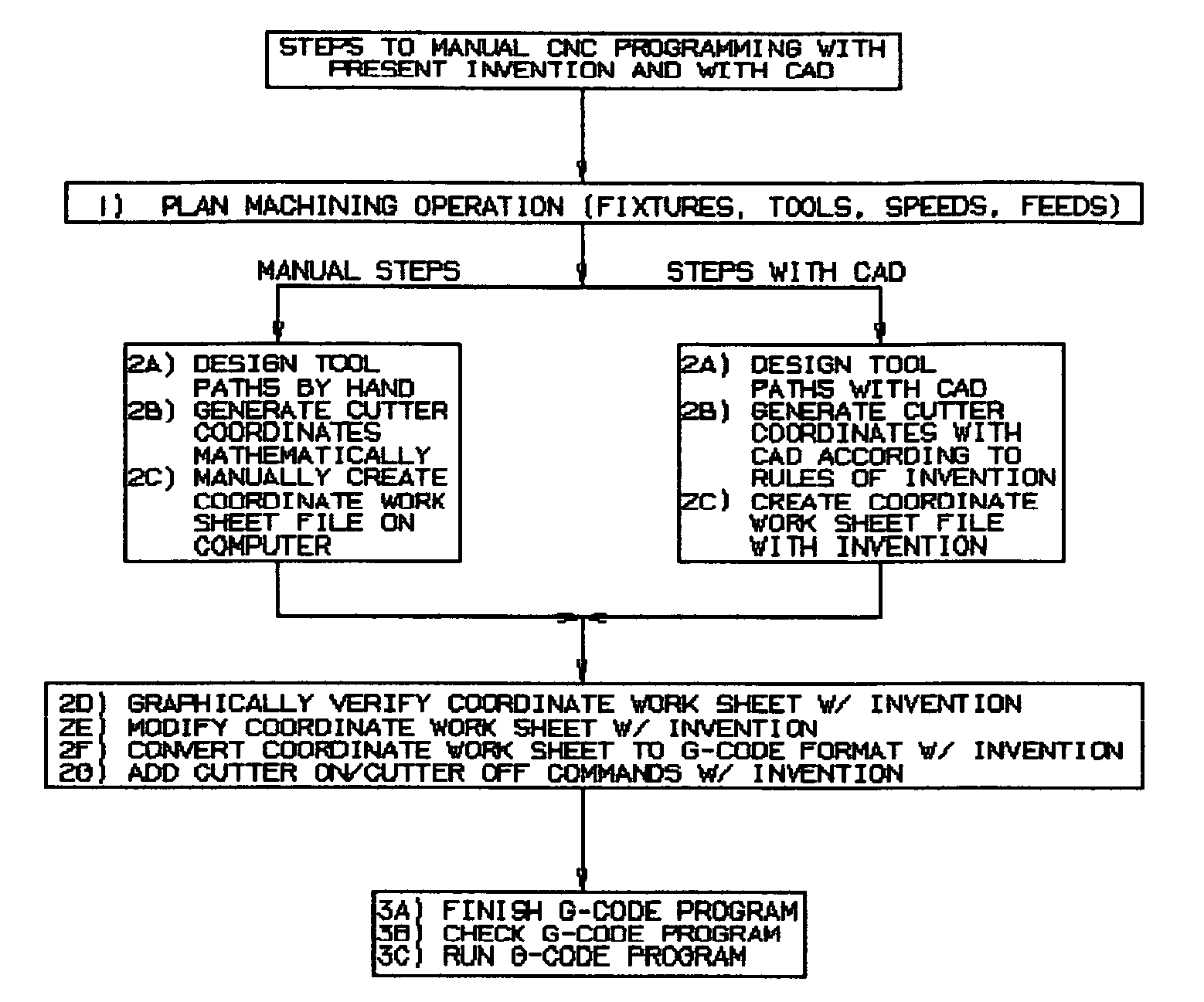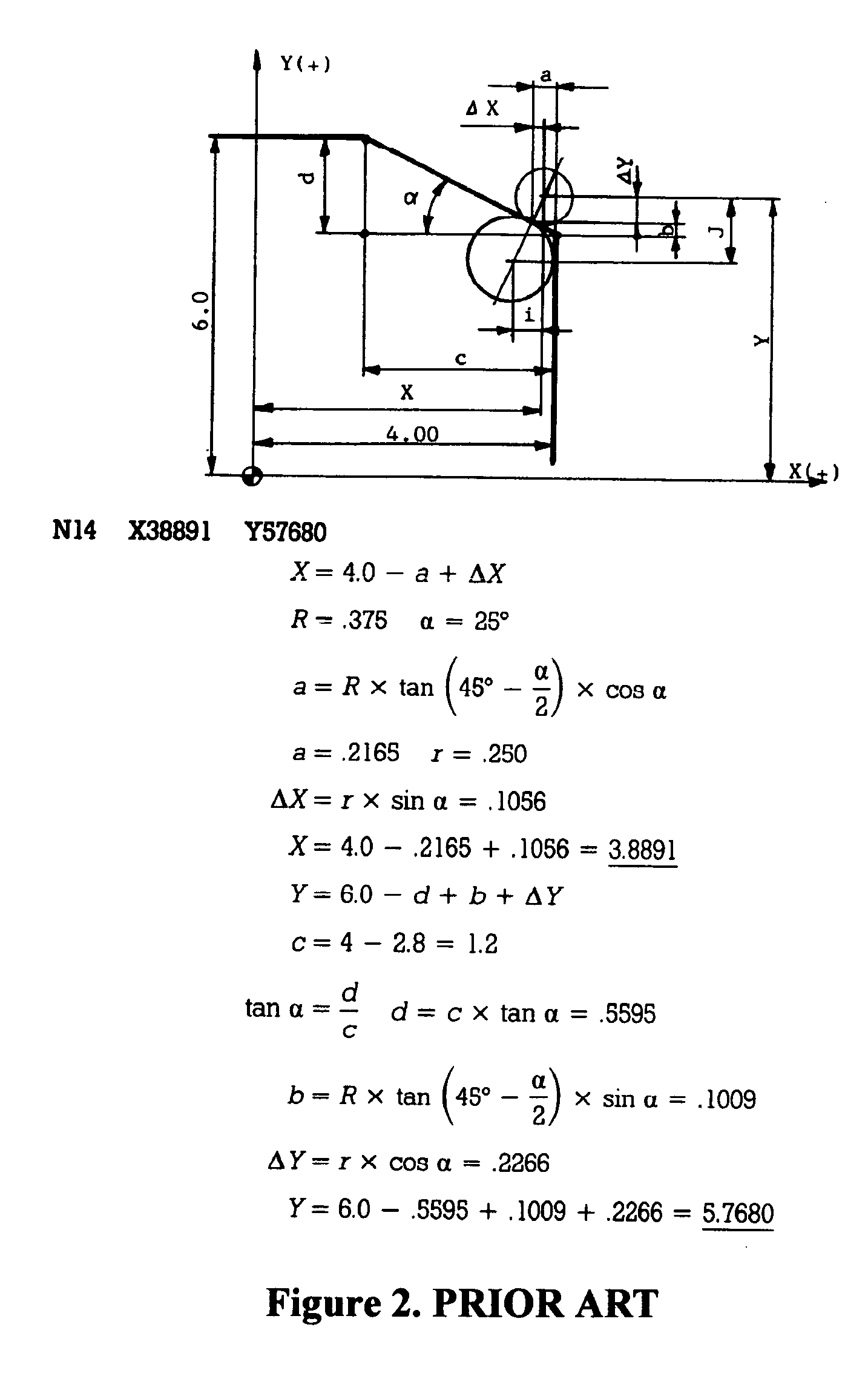Methods and systems for producing numerical control program files for controlling machine tools
a numerical control and program file technology, applied in the field of numerical control of machines, can solve the problems of time required to do calculations, difficulty in calculating the cutter location to be entered into the computer controller to cut the parts, and the possibility of errors, so as to achieve the effect of relatively simpl
- Summary
- Abstract
- Description
- Claims
- Application Information
AI Technical Summary
Benefits of technology
Problems solved by technology
Method used
Image
Examples
Embodiment Construction
[0084]For a further understanding of the nature, function, and objects of the present invention, reference should now be made to the following detailed description taken in conjunction with the accompanying drawings. Detailed descriptions of the preferred embodiments are provided herein, as well as, the best mode of carrying out and employing the present invention. It is to be understood, however, that the present invention may be embodied in various forms. Therefore, specific details disclosed herein are not to be interpreted as limiting, but rather as a basis for the claims and as a representative basis for teaching one skilled in the art to employ the present invention in virtually any appropriately detailed system, structure, manner, or environment. The practice of the present invention is illustrated by the following examples which are deemed illustrative of the process taught by the present invention as well as providing the teachings for the products and articles of manufactu...
PUM
 Login to View More
Login to View More Abstract
Description
Claims
Application Information
 Login to View More
Login to View More - R&D
- Intellectual Property
- Life Sciences
- Materials
- Tech Scout
- Unparalleled Data Quality
- Higher Quality Content
- 60% Fewer Hallucinations
Browse by: Latest US Patents, China's latest patents, Technical Efficacy Thesaurus, Application Domain, Technology Topic, Popular Technical Reports.
© 2025 PatSnap. All rights reserved.Legal|Privacy policy|Modern Slavery Act Transparency Statement|Sitemap|About US| Contact US: help@patsnap.com



